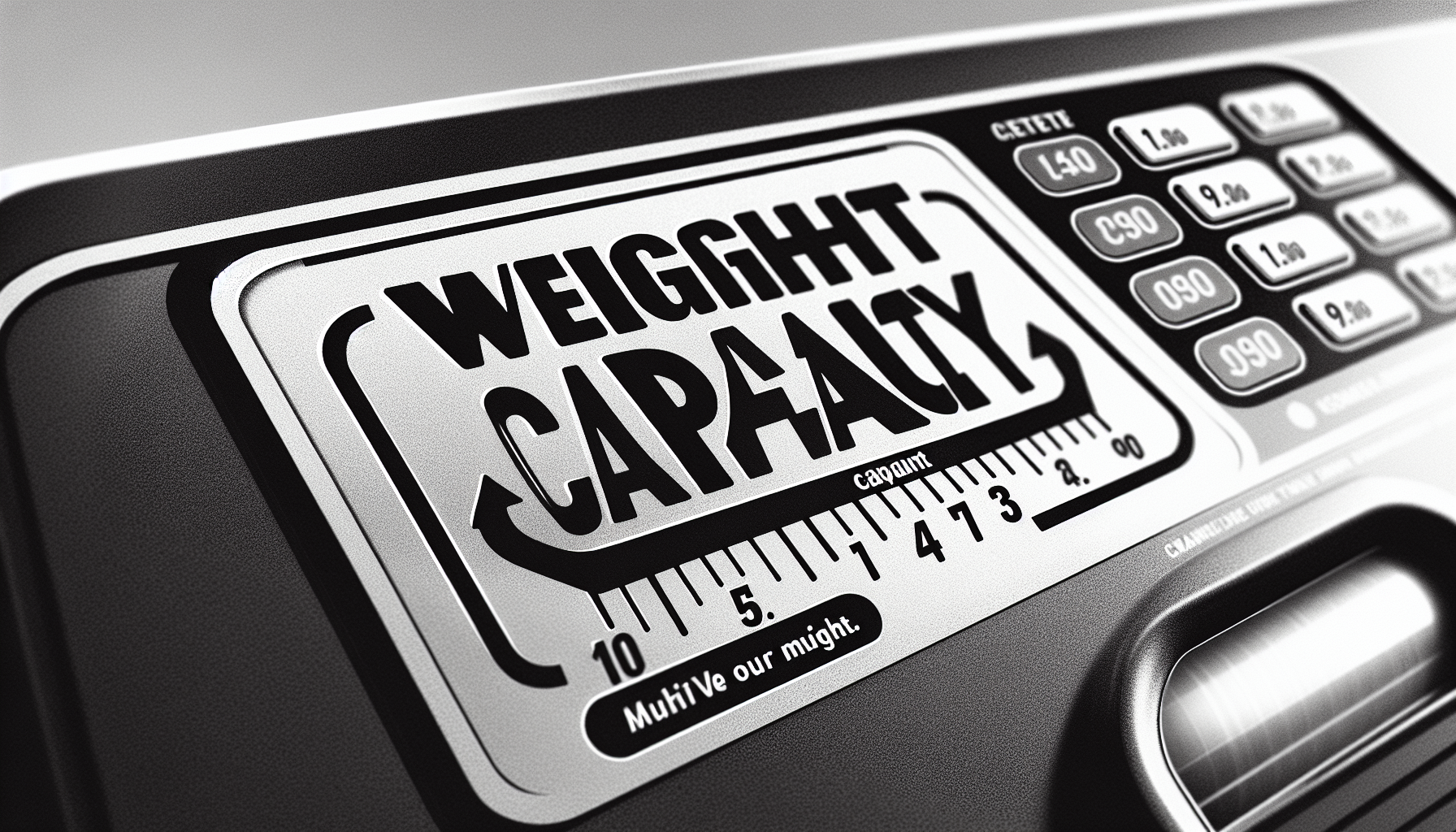Have you ever wondered why weight capacity matters on a treadmill? Whether you’re a fitness enthusiast or just starting your fitness journey, it’s crucial to understand the importance of weight capacity when using a treadmill. Weight capacity refers to the maximum amount of weight that a treadmill can safely support. This factor impacts not only the durability and lifespan of the treadmill but also your safety while using it. In this article, we will explore the reasons why weight capacity matters on a treadmill and how it can affect your overall workout experience. So, let’s dive in and discover why paying attention to weight capacity is essential for a successful treadmill workout.
Why Weight Capacity Matters on a Treadmill
When it comes to choosing a treadmill, there are several factors to consider, and one of the most important ones is weight capacity. Understanding weight capacity on treadmills is crucial for ensuring safety and optimal performance during your workouts. In this article, we will explore the reasons why weight capacity matters on a treadmill and how it can impact your fitness journey.
Understanding weight capacity on treadmills
Weight capacity refers to the maximum weight that a treadmill can safely support during use. It is typically measured in pounds or kilograms and is an important specification to consider when purchasing a treadmill. By understanding weight capacity, you can ensure that the treadmill you choose can effectively and safely accommodate your body weight.
Importance of weight capacity for safety
The safety of users is paramount when it comes to using any exercise equipment, and treadmills are no exception. Exceeding the weight limit specified by the manufacturer can lead to serious accidents and injuries. When you operate a treadmill that is not designed to handle your weight, the machine may become unstable and prone to malfunctioning, increasing the risk of falls or equipment failure. Therefore, it is crucial to choose a treadmill with a weight capacity that aligns with your body weight for a safe workout experience.
Effects of exceeding weight capacity
Exceeding the weight capacity of a treadmill can have detrimental effects not only on your safety but also on the durability and performance of the machine. When you put more weight on the treadmill than it is designed to handle, the added stress and strain can cause the motor to burn out faster, leading to costly repairs or the need for a replacement. Additionally, the belt may wear out quicker and lose its traction, making your workouts less effective and potentially dangerous.
Choosing the right treadmill for your weight
Selecting a treadmill with an appropriate weight capacity for your own weight is crucial to ensure a safe and effective workout experience. To determine the right weight capacity for your needs, you should take into account your current weight as well as any weight loss goals you might have. It is generally recommended to choose a treadmill that can support a weight at least 50 pounds higher than your current weight. This ensures that the machine can handle any fluctuations in weight as you progress on your fitness journey.
Adjusting for individual fitness levels
In addition to considering your body weight, it is also important to factor in your fitness level when selecting a treadmill. If you are just starting your fitness journey or have a higher body fat percentage, it is advisable to choose a treadmill with a higher weight capacity. This allows for comfortable and stable workouts, even as you work towards your weight loss or fitness goals.
Factors that determine weight capacity
The weight capacity of a treadmill is determined by several factors, including the quality and strength of the frame, the motor power, and the overall design and construction of the machine. Higher-end treadmills often have higher weight capacities as they are built using stronger materials and more robust engineering. It is important to look for treadmill models that have been specifically designed to accommodate higher weight capacities in order to ensure a safe and durable workout experience.
Benefits of using a treadmill within weight limits
Using a treadmill within its weight limits offers numerous benefits for your fitness journey. Firstly, it ensures the safety of your workouts, minimizing the risk of accidents and injuries. Secondly, by operating the treadmill within its specified weight capacity, you can expect the machine to perform optimally, providing smooth and consistent motion that enhances the effectiveness of your workout. Finally, using a treadmill within its weight limits also helps preserve the longevity and durability of the machine, reducing the need for expensive repairs or replacements.
How weight capacity affects treadmill performance
Weight capacity directly impacts the performance of a treadmill. When a treadmill is operated within its weight limit, the motor can work efficiently, providing consistent speeds and incline levels throughout your workout. The belt remains properly tensioned, allowing for a smooth and even running or walking experience. However, if a treadmill is overloaded, the motor may struggle to maintain the desired speed, resulting in abrupt changes or fluctuations during your workout. This can be frustrating and may affect the overall quality of your exercise routine.
Maintenance and durability considerations
Choosing a treadmill with an appropriate weight capacity is not only important for your safety and workout experience but also for the durability and maintenance of the machine. By using a treadmill within its weight limits, you can avoid putting excessive stress on the motor, belt, and other components, reducing the likelihood of breakdowns or malfunctions. It is also advisable to follow the manufacturer’s maintenance guidelines, including regular lubrication of the belt and routine inspections, to ensure the longevity of your treadmill.
Additional considerations for commercial treadmills
If you are considering purchasing a treadmill for a commercial setting, such as at a gym or fitness center, it is crucial to choose a model with a high weight capacity. Commercial treadmills are designed to withstand heavy usage and accommodate a wide range of users with varying weights. It is recommended to opt for a commercial-grade treadmill that has a weight capacity of at least 400-500 pounds to ensure durability and safety in a commercial environment.
In conclusion, weight capacity is a crucial factor to consider when choosing a treadmill. By understanding and adhering to weight capacity limits, you can ensure your safety, enhance the performance of the machine, and prolong its lifespan. Whether you are purchasing a treadmill for personal use or for a commercial setting, selecting the right weight capacity will contribute to a more enjoyable and effective workout experience. So, always remember to check and respect the weight capacity of any treadmill you plan to use, and take the necessary steps to prioritize safety and optimal performance during your fitness journey.


